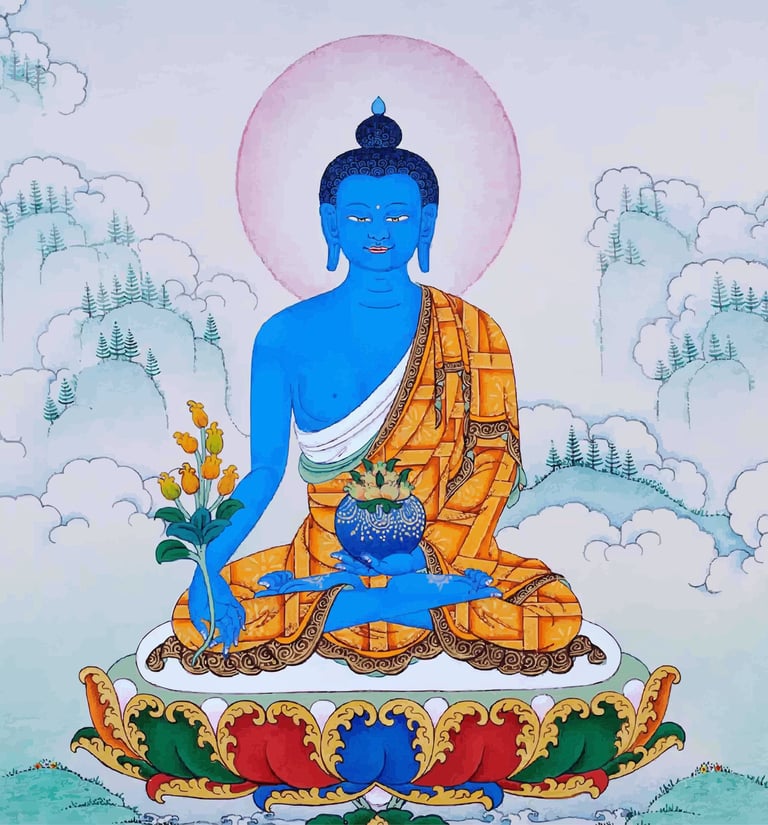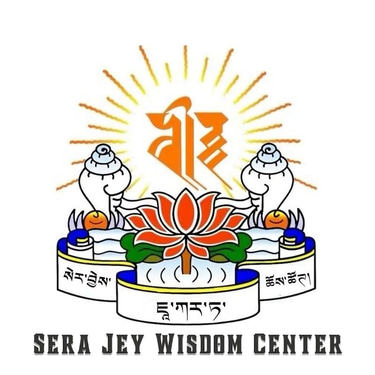Medicine Jangwa Puja: Tibetan Buddhist Ritual Of Purification And Healing
Medicine Jangwa Puja is a sacred Tibetan Buddhist ritual of purification and healing, performed to cleanse negativity and bring peace and harmony.
7/21/20253 min read


Medicine Jangwa Puja is a profound Tibetan Buddhist ritual of purification and healing, widely performed for the benefit of both the living and the deceased. It is a powerful spiritual ceremony rooted in the Mahayana Buddhist tradition, particularly in Vajrayana practices, where ritual, visualization, mantra, and offerings are used to cleanse negative karma, pacify obstacles, and guide the consciousness of the dead toward higher states of rebirth or liberation. The word “Jangwa” means "purification" or "elevation," and when combined with the blessings of the Medicine Buddhas, it becomes an exceptionally potent practice for spiritual and karmic purification.
At the heart of the Medicine Jangwa Puja is the invocation of the Medicine Buddha—Bhaisajyaguru, the supreme healer who made twelve great vows to help all beings overcome suffering and attain enlightenment. In Tibetan, he is known as Sangye Menla, the Enlightened One of Healing. In this puja, not just one, but the entire assembly of the Seven Medicine Buddhas are invoked along with Shakyamuni Buddha. Each of these Buddhas embodies unique healing qualities and wisdom, contributing to the multi-dimensional healing aspect of the ritual. The purpose is not only to promote physical healing but to cure the deeper causes of suffering, such as ignorance, attachment, and aversion.
The Jangwa Puja is particularly known for its power to purify the consciousness of those who have passed away. According to Tibetan Buddhist belief, after death, a person’s consciousness continues in a transitional state known as the bardo. During this period, the mind is very sensitive and responsive to external influences, both positive and negative. If the person has accumulated negative karma during life, they may be drawn to lower realms of existence. The Medicine Jangwa Puja, when performed with sincere intention and proper ritual, can purify these karmic debts and elevate the deceased’s consciousness, giving them a better chance at a favorable rebirth—or even complete liberation from the cycle of suffering, samsara.
The ritual itself involves several stages. It begins with the generation of bodhicitta, the altruistic intention to attain enlightenment for the benefit of all beings. The practitioner then visualizes the Medicine Buddhas in a radiant celestial field and recites their mantras, particularly the central mantra:
"Tadyatha Om Bekandze Bekandze Maha Bekandze Radza Samudgate Soha"
This sacred sound is repeated to invoke the healing energy of the Buddhas and to connect with their enlightened presence.
The core element of the Jangwa Puja is the fire offering, where sacred substances such as grains, herbs, oils, and symbolic items representing defilements are offered into a consecrated fire. As these offerings are consumed by the fire, practitioners visualize that all negativities, karmic obstacles, and mental afflictions of the deceased or afflicted are burned away and transformed into pure light. This fire becomes a symbol of transformation—purifying, healing, and awakening all sentient beings touched by its energy.
Another significant part of the puja involves dedication of merit. The positive energy generated through the ritual is not held for oneself but is dedicated to all beings across time and space. This dedication is considered essential in Tibetan Buddhism, as it multiplies the benefits and ensures that the intention remains pure and selfless.
Medicine Jangwa Puja is not only performed after death but also during times of great illness, misfortune, or psychological distress. It can be done on auspicious days to accumulate merit, remove obstacles, and create the causes for long life, good health, and spiritual progress. Families often request this puja to be done after the death of a loved one, especially during the 49-day bardo period, to ensure a smooth transition for the soul. Monasteries and lay practitioners alike perform this ritual during community healing events, lunar festivals, or following natural disasters to bring balance and peace to disturbed environments.
Ultimately, the Medicine Jangwa Puja is an act of deep compassion. It reminds us of the interconnectedness of life and death, the continuity of consciousness, and the power of prayer and ritual to transform suffering into peace. Whether performed for oneself, for others, or for the departed, it offers a bridge between the physical and spiritual realms—a path of healing, purification, and liberation that transcends the limitations of this life.
Community
Explore teachings, prayers, and cultural events.
Address
Sera Jey Wisdom Center
Ruko Savoy Blok C1 No.31 & 32,
River Garden Jakarta Garden City,
Cakung Timur, Jakarta Timur 13910,
Indonesia
+62 813 2488 4241
© 2025. All rights reserved.
